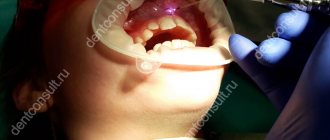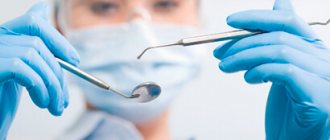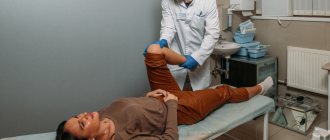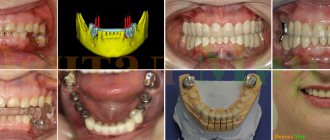The dental industry is considered one of the most popular and relevant in medicine. It is developing rapidly and opening up many new industries for implementation. Dentists not only treat and remove teeth, but also eliminate various aesthetic defects and advise patients on proper care.
Orthodontics is a promising dental field in the modern world. Many applicants choose this industry at the admission stage. They are looking for information about educational institutions that train orthodontists, about the advantages and disadvantages of this specialty. Graduates are interested in the questions: “How to become an orthodontist?”, “What are the main responsibilities of employees?” and “How and when can I go to study?”
Our assessment of the profession
6
Demand
7.0/10
Salary
9.0/10
Is it “easy” to get a profession?
2.0/10
Kudos
9.0/10
Career
3.0/10
For toothaches and other problems that arise in the oral cavity, people turn to dentists. Few patients know that their doctor with a different name is treating them. After all, practical dentistry combines several areas, such as therapy, orthopedics, surgery, and orthodontics. And, if with the first specialties everything is clear by name, then the specifics of the work of an orthodontist raises questions. What does this doctor do, when should you contact him and how to get a profession?
Reasons for contacting
Basically, orthodontists are pediatric doctors:
- It is recommended to bring a child to an orthodontist at the age of 2-3 years, with the appearance of the first teeth
It is recommended to bring a child to an orthodontist at the age of 2-3 years, with the appearance of the first teeth;
- the second, mandatory, appointment occurs at the age of five, when baby teeth are replaced by permanent ones;
Special reasons to visit a doctor:
- bad habits of the child;
- steady mouth breathing;
- congenital pathologies;
- irregular shape and direction of growing teeth.
If measures are not taken in a timely manner, the anomaly will develop into a complex form.
In turn, visiting a dentist will allow you to use effective preventive methods and save your child, in the future, from wearing braces for many years.
Who is called an orthodontist and what functions does the doctor perform?
An orthodontist is a “beautiful smile” doctor. This is how one can characterize all his activities aimed at correcting congenital or acquired jaw defects and solving aesthetic problems. Injuries, incorrect (pathological) bite, abnormalities of curved teeth, displacement of dentition, facial asymmetry - this is a small list of problems with which patients turn to an orthodontist. A visit to this specialist is also necessary before the prosthetic procedure.
The main tasks of an orthodontist:
- research into the causes that led to the formation and development of pathologies (congenital, hereditary or acquired);
- determination and analysis of the level of complexity of the patient’s problem;
- drawing up an adequate and effective course of treatment for the detected pathology, based on the individual characteristics of the patient and the diagnosis;
- carrying out measures to prevent further development or recurrence of the anomaly in the patient;
- records management;
- if necessary, performing dental procedures: tooth extraction, pain relief;
- providing first aid if the patient needs it.
Orthodontists are required to tell patients about the rules of oral hygiene. These specialists install braces, make impressions and determine the parameters of dentures.
Orthodontists are divided into children's and adults, because problems with jaw anomalies occur at any age. However, treatment methods for adult patients and children differ.
What does an orthodontist do?
Orthodontists deal with:
- correction of abnormal jaw development;
- alignment of the dentition (row);
- treatment of soft tissues;
- installation of braces;
- restoration of lost tooth fragments.
Most often, doctors have to work with patients who have malocclusion. Jaw pathologies can also occur as a result of injuries. Another important task of the orthodontist is to prepare the patient for the process of prosthetics or installation of implants.
Differences in the work of a pediatric orthodontist
As soon as the baby's first teeth appear, he can be taken to see an orthodontist if the parents are concerned about something. The period from 6 months to 1.5-2 years, while baby teeth are being cut, is considered the most successful for correcting jaw pathologies. After all, it is at this moment that the bite, and the dental system as a whole, is formed.
The sooner abnormalities are diagnosed, the easier it will be to get rid of them without using medications.
The tasks of a pediatric orthodontist include:
- study of late eruption or loss of primary teeth and treatment of such anomalies;
- prescribing a treatment plan and monitoring the patient’s condition at all stages;
- installation of mouthguards or braces for adolescents with a violation of the molar bite (not earlier than 11 years).
What does an orthodontist treat?
Many people dream of an ideal smile, straight teeth and correct bite, since these factors often influence how a person is perceived in society. If we don’t talk about aesthetics, we are talking about serious pathological phenomena that arise due to jaw anomalies. These include diction disorders and other diseases of the gums and teeth. Anomalies in the development of the jaw can even lead to diseases of the cervical spine, so orthodontics is one of the most important areas in dental practice, dealing with precisely these problems.
Free consultation on training issues
Our consultants are always ready to tell you about all the details!
Advantages and disadvantages
The profession of an orthodontist is one of the most popular specialties in any clinic or hospital in Russia. Specialists have a high salary; in addition, monthly earnings can increase by receiving bonuses or bonuses. Additional advantages of the profession include:
- constant availability of work, because the number of patients with jaw problems is large;
- lack of heavy physical labor;
- excellent students with high Unified State Exam scores get the opportunity to become applicants to higher educational institutions for free; budget places are also available in residency;
- a large number of regular customers.
Disadvantages of orthodontists:
- high level of responsibility;
- nervous tension;
- long period of training;
- low level of wages in public medical institutions.
Advantages and disadvantages
All applicants want to know about the possible pros and cons that they may encounter while working. The advantages of this specialty include:
- good salary with a chance for additional opportunities. payments and bonuses;
- the opportunity to work with unique clinical cases and understand the structure of patients’ jaws;
- career prospects and a chance to take the post of chief physician;
- fixed shift work schedule, taking into account the time necessary for employees to recuperate;
- long vacation and additional days off for overtime (45 days or more);
- new interesting acquaintances in the medical field;
- a chance to work not only as an orthodontist, but also as a general practitioner;
- a chance to help people every day.
Professionals deal with various maxillodental defects and psychological problems of patients every day. Their main task is to provide the necessary psychological support. They help their patients not only get rid of discomfort and pain, but also increase their self-esteem. For this, doctors receive in return gratitude and recognition of the importance of their work.
Unfortunately, there are not only advantages, but also disadvantages. These include:
- a high level of administrative and criminal liability for their actions;
- high psychological and physical stress;
- a long and expensive period of study (there are usually fewer budget places at the nursing faculty than at others).
There are disadvantages in any industry, but applicants do not need to focus on them when choosing a specialty. Orthodontics offers many career prospects and avenues for professional fulfillment. Those who choose this specialization can be in demand as workers if they study hard.
Where to get education
Obtaining the profession of an orthodontist is a long process. First, you need to obtain a specialized dental education at any medical higher education institution in the country. The training will last 5 years.
For successful admission, applicants must provide high results on the Unified State Exam or pass tests in the following disciplines: mathematics, physics, chemistry, biology. Some universities also require a foreign language exam. The list of subjects should be clarified at a specific educational institution.
The best universities in Russia that graduate dentists are:
- Lomonosov Moscow State University;
- RUDN;
- Siberian State Medical University;
- First Moscow State Medical. Sechenov University;
- St. Petersburg State University;
- KubSMU and others.
Applicants who show the best results in the exams can expect to enroll for free. However, there are not many budget places in medical universities - about 20.
After receiving a specialized dental education, the graduate must continue his residency training in the specialization of orthodontist. This takes another 4 years.
After receiving a retraining certificate, the orthodontist can begin to practice. Every 5 years, doctors in this specialty are required to take advanced training courses. The courses are conducted both part-time and remotely, so that the dentist is not distracted from his professional activities.
Methods
To treat orthodontic problems, the dentist uses two options: conservative and surgical.
The surgical method is used only in extreme cases when alternative therapy does not produce results.
The conservative method, on the contrary, is the preferred option and includes two techniques: myotherapy and hardware treatment.
Myotherapy
Myotherapy refers to special gymnastics aimed at stimulating the functioning of the jaw muscles. It is most effective in the treatment of childhood pathologies , at an age when installation of corrective structures is not possible. Included in adult therapy as a preventive measure.
Myotherapy includes the following:
- exercises aimed at working the tongue;
- tilting the head while chewing;
- gargling or yawning;
- massage the soft palate and gums with a brush.
Hardware treatment
This method is basic in orthodontics and includes the use of special corrective structures. Treatment in this way can be carried out at any age, but the older the patient, the longer the therapy.
The principle of the technique is that with the help of devices, the load on the jaw is evenly distributed.
To troubleshoot problems use:
- braces;
- aligners;
- records.
In this video, an orthodontist talks about ways to correct a bite.
Any structure is installed in one day, and this procedure takes no more than an hour.
Surgical
In severe cases of pathology, surgical intervention is resorted to. In this case, several options are possible:
- removal of interfering teeth;
- removal of part of the bone tissue;
- compactosteotomy: cutting the bone in the problem area.
As a rule, this method requires further treatment using conservative techniques.
Where to find a job
Orthodontists are a sought-after profession in the labor market. A dentist can work in orthodontic departments located in children's and adult clinics or hospitals. Orthodontist vacancies are open in many medical centers, studios, and aesthetic medicine clinics. An experienced orthodontist with a long-term practice can open his own private office to provide dental services.
In addition, orthodontists who do not have a desire to interact with patients have the opportunity to get work in enterprises involved in the sale or manufacture of medicines, medical devices or equipment.
Brief job description
When performing his official duties, the orthodontist is obliged to rely on documents regulating his rights and obligations, and to fulfill the prescribed requirements, namely:
- higher medical education in the field;
- knowledge of the basics of the legislative framework, the content of regulations;
- possession of proper tools and equipment;
- a set of necessary theoretical knowledge and practical skills;
- carrying out diagnostics, correction, treatment, prevention, etc.;
- familiarity with the procedure and organization of work, understanding of the structure, awareness of the tasks of the orthodontic service;
- planning activities, maintaining documentary reports;
- knowledge of safety rules, labor protection standards, sanitation, fire protection;
- compliance with internal labor regulations established by the organization’s management;
- control, responsibility for the work of subordinate personnel.
Requirements for the applicant
In addition to having a higher education diploma, the employer pays attention to the following professional qualities of the applicant:
- knowledge of the principles of drug use in orthodontic treatment;
- ability to classify dentofacial pathologies;
- knowledge in the field of fixed and removable orthodontic appliances;
- ability to use methods for studying and treating anomalies;
- knowledge in the field of physiotherapy;
- skills in working with x-rays, articulators, endomotors, and visiographs;
- possession of a personal computer.
The orthodontist is also required to know emergency first aid techniques.
In addition to high knowledge in the professional field, the orthodontist must have suitable personal qualities. As a rule, both adults and children are a little afraid of dentists. An orthodontist, unlike his colleagues, dental therapists, has to be seen by patients much more often during the treatment period. This means that the doctor must inspire confidence and be able to win over you. Tolerance, diligence and communication skills are important qualities for a professional.
In addition, the specialist must have perfect vision and developed fine motor skills.
Responsibilities of an orthodontist
When working with patients, the orthodontist:
- examines the oral cavity, identifying abnormalities of the jaws;
- conducts diagnostics (the most popular method is a panoramic x-ray of both jaws);
- restores the enamel coating of teeth;
- makes impressions for implants, braces and prosthetics;
- puts braces in order to give the teeth and bite the correct position;
- installs space clamps and removable plates;
- Conducts control diagnostics to evaluate the treatment provided.
Treatment of one patient in orthodontic practice can last for months, since we are talking about a detailed study of the condition of the oral cavity and selection of the optimal treatment option. As for the treatment itself, it can take from one and a half to two years, if we are talking about correcting the bite and correcting the position of the teeth.
Wage
An orthodontist's salary depends on many factors. This is both a qualification level and experience in practice. The average salary in Russia is 60 thousand rubles. The minimum salary is 30 thousand per month, the maximum salary of a high-level specialist can reach up to 300 thousand rubles per month. As a rule, orthodontists in private clinics receive a higher salary rate compared to public institutions.
When hiring, many employers give orthodontists a probationary period (3 months according to labor law). The wage rate at this time is 25-30 thousand rubles per month.
Orthodontic dental assistants can count on an average salary of 25 thousand rubles.
The data is current as of October 2022 and taken from the Yandex Job service.
What skills and qualities are important for the job?
To become a successful orthodontist, you need to possess a number of human qualities and skills. An orthodontist, like any other specialist, must be a master of his craft, because the health and appearance of a huge number of people depends on his work. This is not an ordinary dentist who sees a client approximately once every six months, so it is especially important to establish trusting contact.
- Personal qualities important in the work of an orthodontist include communication skills, diligence, and tolerance.
- A doctor must be to some extent a psychologist in order to be able to win people over. For most patients, having to correct the bite and wear braces will be a great stress, and the orthodontist must take this into account.
Only a doctor who is able to cope not only with his own doubts, but also with the client’s concerns can become a real specialist. This is not easy, which is why orthodontist is a fairly highly paid profession. However, sometimes even a decent salary cannot retain an employee who finds it difficult to cope with the workload.
The success of an orthodontist depends not only on qualifications and communication skills. Not the least important role is played by the chosen method of work, the responsibility of the client himself, and even how the dentistry is equipped.
Professional growth
An orthodontist, like other representatives of medical professions, is assessed according to qualification criteria. The longer he practices, the higher his chances of receiving a salary increase and career advancement. Orthodontists who have worked for more than 3 years receive the second category, and over 7 years - the first. The highest qualification is awarded to specialists who have been working for more than 10 years. A doctor has the right to refuse to undergo advanced training tests. In this case, you won’t have to count on career growth.
In clinics and hospitals, an orthodontist with extensive work experience and high qualifications can obtain a position as head of an orthodontic or dental department. In private clinics, promotion as such is not provided. However, having gained considerable experience, a specialist can find a job in a more respectable private clinic or open his own office.
The profession of orthodontist requires extensive training. Moreover, the main role is not the theoretical basis, but practice. An orthodontist needs to constantly accumulate practical experience, increase the level of knowledge and skill. Seminars, courses and other events aimed at broadening the specialist’s horizons will help with this. Diligence, hard work, and a friendly attitude towards patients will help a novice doctor quickly build a career and earn the respect of colleagues and clients.
What diseases does he deal with?
An orthodontist is able not only to prevent the development of abnormal formation of the dentition, but also to correct existing problems. There are many pathologies that are successfully treated by this doctor.
Crooked teeth
You can often see a situation where one crown is slightly rotated and overlaps with the other. Such areas are a favorite territory for bacteria that cause periodontal inflammation and caries.
Conical or awl-shaped teeth
This phenomenon is often observed when crowns are overcrowded. With their shape they resemble an awl, a cone and have a short root.
Hypoplasia
It is characterized by the appearance of areas of deformation or complete absence of enamel on the enamel , which stand out sharply by their color against the general background of the crown.
Enamel dysplasia
The most common cause of dysplasia is a genetic factor. The crowns appear on time, but are brown in color. Subsequently, active abrasion of the enamel occurs, which takes on the appearance of crumpled paper.
Dentin dysplasia
This disease is characterized by the grayish color of the teeth and the rapid destruction of their cutting part. The examination reveals a narrowing of the cervical region, shortened roots and a bulbous shape of the crown.
Macrodentia
As a rule, it manifests itself in the anterior region and is characterized by abnormally large incisors. Deviations may exceed standard dimensions by 6 mm. Giant forms provoke displacement of adjacent crowns.
Microdentia
Pathology opposite to macrodentia. In this case, the crowns grow small. This entails the appearance of gaps between them, displacement and rotation around their axis.
Merged teeth
The fusion of teeth occurs at the rudiment level, so the erupted crowns have a tight connection in the dentin area.
Edentia
This pathology is characterized by the complete absence of tooth buds . This phenomenon is very rare and often accompanies dysplasia. It is mainly diagnosed during the period of teeth change.
Hypodentia
In this case, only a partial absence of permanent primordia may be observed.
Hyperodentia
The pathology is characterized by the appearance of teeth exceeding the standard number . Localized in the area of the upper incisors.
Impacted teeth
Impacted crowns most often include molars, the development of which is hampered by adjacent crowns or gum tissue. If the problem is not corrected in a timely manner, it can lead to severe pain and curvature of the entire dentition.
Preserved baby teeth
Typically, the presence of milk crowns is observed in the absence of a permanent rudiment or its deep location. This phenomenon rarely causes negative consequences, and therefore treatment is carried out only for certain indications : provoked periodontal inflammation, etc.
Gap between front teeth (diastema)
Diastema appears between the incisors, located in the center most often of the upper row, less often - the lower. Diastema can cause the development of periodontitis , impaired pronunciation of certain sounds, and exposure of the neck of the crown.
Tremes
Trema is the space formed between the teeth when the jaws close. Depending on the width of the trema, the treatment method is selected. But, as a rule, a bracket system is effective in this case.
Shortening of the dentition
Occurs due to the vestibular inclination of the teeth, macro or microdentia, adentia. It is manifested by twisted crowns, which are strongly rotated and have an incorrect slope.
Elongation of the dentition
This pathology is provoked by oral tilting of the teeth. It is characterized by the distant arrangement of crowns with the formation of diastemas.
Dentoalveolar shortening
Pathology refers to a vertical anomaly, the cause of which lies in the uneven development of various segments of the jaw . It is observed in the area of canines and incisors, which are in maximum contact with each other.
Dentoalveolar elongation
The cause of this disease is carious lesions of the crowns . In this case, there is a complete disruption of contact between adjacent teeth.
Narrowing of the dentition
When narrowing, there is insufficient space for the standard number of teeth . This leads to crowding and distortion of the front row.
Expansion of the dentition
When expanded, gaps form between the crowns , which can be corrected with appropriate treatment.
High/low position of individual teeth
In some cases, there may be a single increase or decrease in some crowns. Basically, the canines have a high position and the incisors have a low position.
Distal bite (prognathic)
The most harmless pathology, manifested by the displacement of the upper row forward, overlapping the lower one.
Mesial bite (medial)
With such a bite, the crowns protrude strongly forward , which is a serious cosmetic defect. Often the pathology causes deformation of surrounding tissues.
Open bite
In this case, there is no complete connection when the jaws are closed. The problem often leads to the development of stomach diseases , since proper biting of food is impaired.
Crossbite
With a crossbite, the jaw is strongly pushed forward and the crowns partially overlap the lower row.
Deep (traumatic bite)
It is characterized by a vertical overlap of the anterior segment of the teeth by 3 mm. In some cases, the incisors may push against the gum tissue.











